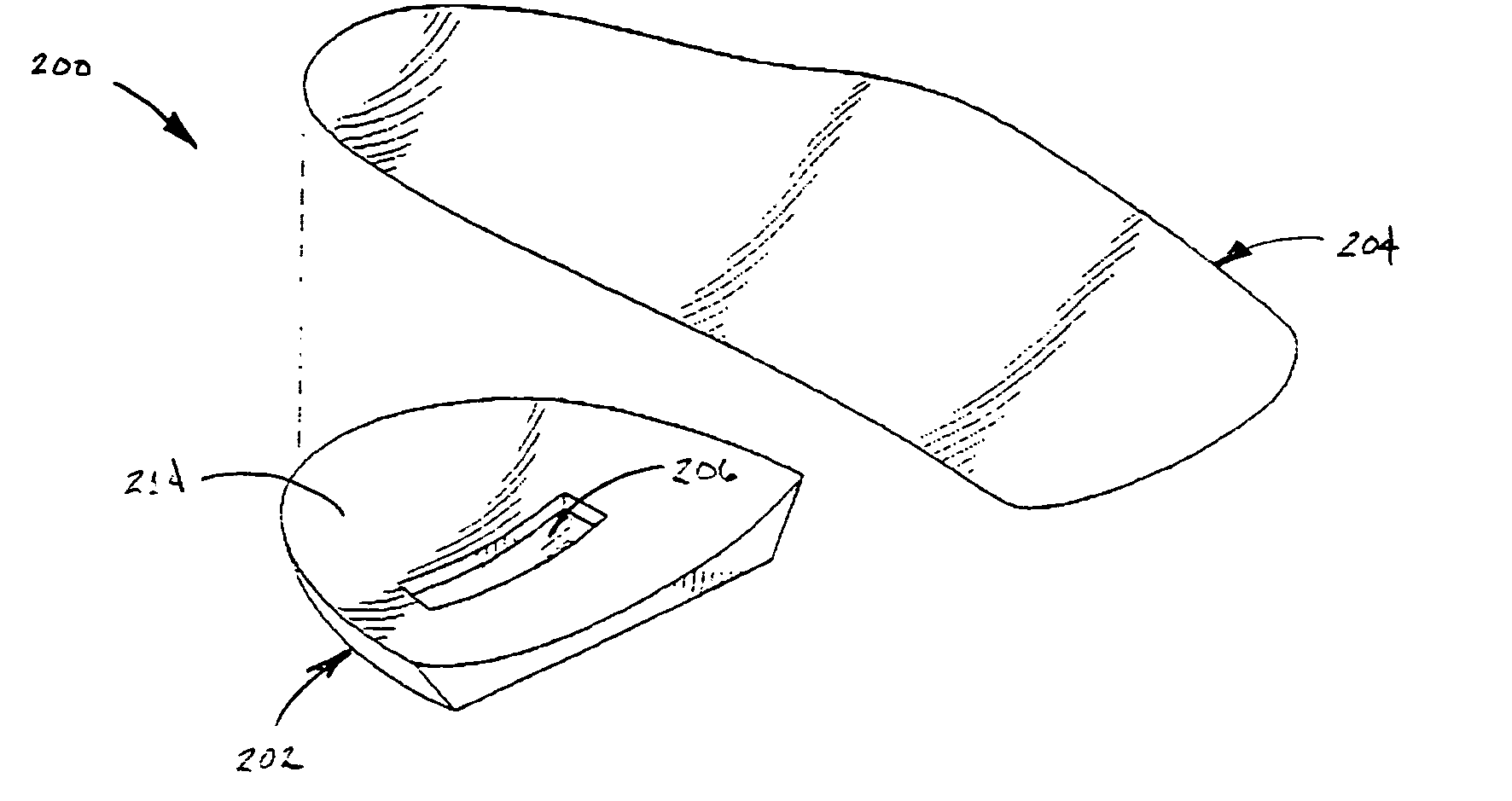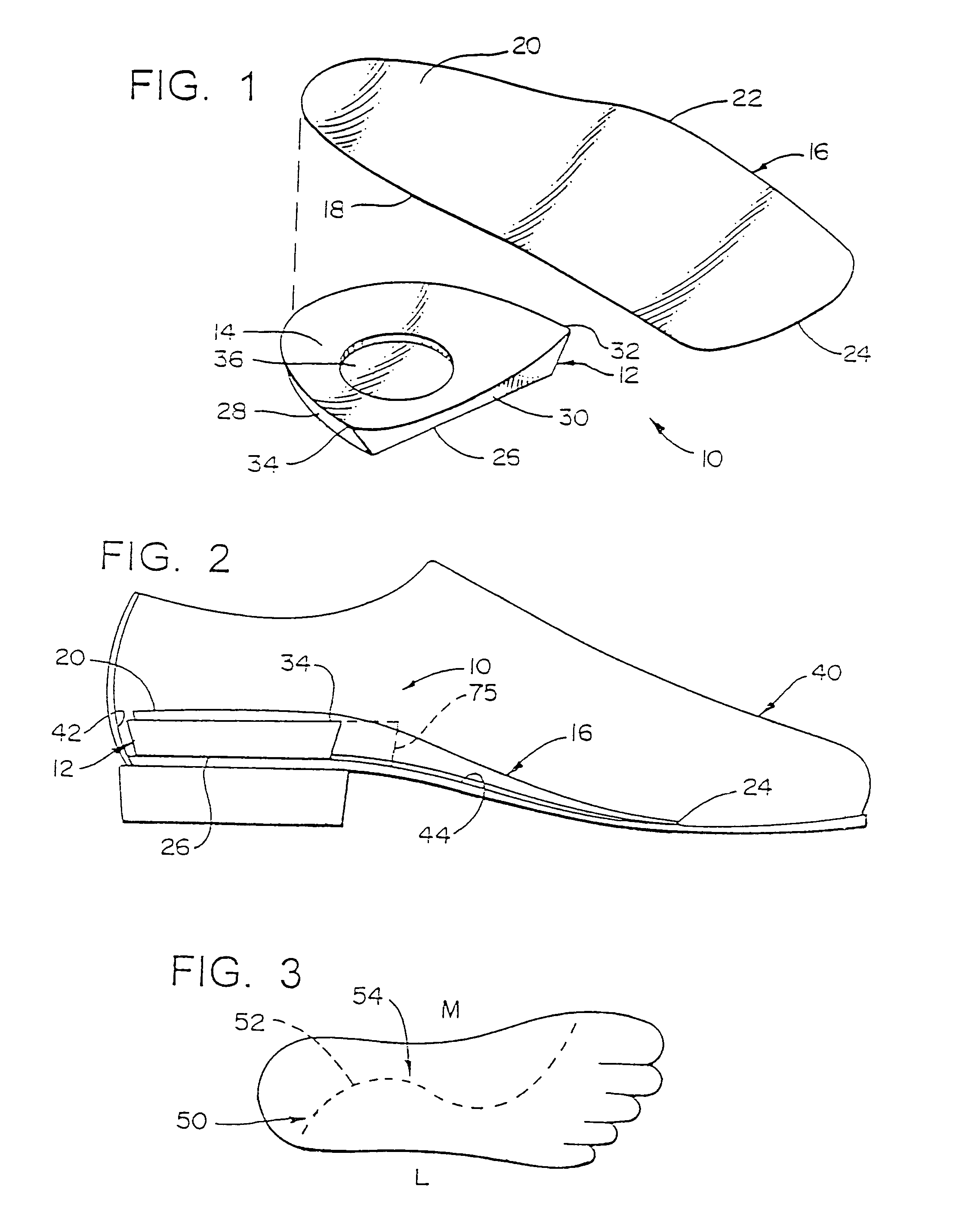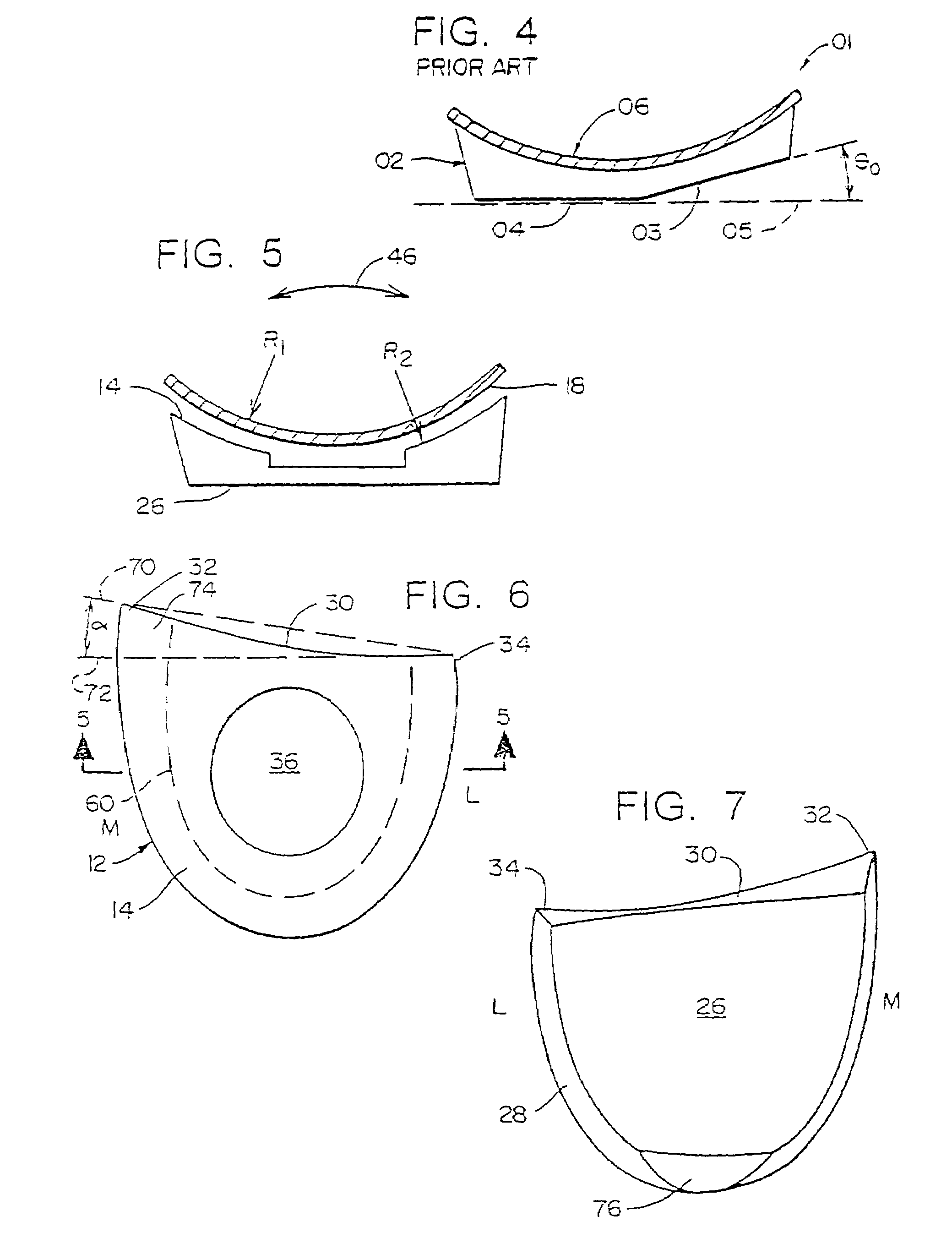Orthotic assembly having stationary heel post and separate orthotic plate
a technology of orthotic plate and heel post, which is applied in the field of orthotic inserts, can solve the problems of modifying the shoe, affecting the comfort of the shoe, and the operation of such devices is often less than satisfactory,
- Summary
- Abstract
- Description
- Claims
- Application Information
AI Technical Summary
Benefits of technology
Problems solved by technology
Method used
Image
Examples
Embodiment Construction
a. Overview
[0056]FIG. 1 shows an orthotic assembly 10 in accordance with the present invention. As can be seen, this comprises two major components, a post member 12 having a generally concave upper surface 14, and a separate plate member 16 have a generally proximal lower surface 18 which fits into and engages the concave upper surface of the post member so as to allow a pivoting or “rocking” motion between the two pieces.
[0057]The plate member includes a heel cup area 20, the upper surface of which engages the plantar surface of the wearer's rear foot, an arch portion 22 which extends beneath the arch of the foot, and a forward end 24 which engages the plantar surface of the forefoot area; in the embodiment which is illustrated, the forward edge 24 is configured to lie generally beneath the metatarsal head area of the foot, so as to lie generally flat with the frontal plane of the foot in the later phases of the gait cycle. The plate member can be formed of any suitable, generally...
PUM
 Login to View More
Login to View More Abstract
Description
Claims
Application Information
 Login to View More
Login to View More - R&D
- Intellectual Property
- Life Sciences
- Materials
- Tech Scout
- Unparalleled Data Quality
- Higher Quality Content
- 60% Fewer Hallucinations
Browse by: Latest US Patents, China's latest patents, Technical Efficacy Thesaurus, Application Domain, Technology Topic, Popular Technical Reports.
© 2025 PatSnap. All rights reserved.Legal|Privacy policy|Modern Slavery Act Transparency Statement|Sitemap|About US| Contact US: help@patsnap.com



